#which crm software is best
Explore tagged Tumblr posts
Text
Integrating Third-Party Tools into Your CRM System: Best Practices
A modern CRM is rarely a standalone tool — it works best when integrated with your business's key platforms like email services, accounting software, marketing tools, and more. But improper integration can lead to data errors, system lags, and security risks.

Here are the best practices developers should follow when integrating third-party tools into CRM systems:
1. Define Clear Integration Objectives
Identify business goals for each integration (e.g., marketing automation, lead capture, billing sync)
Choose tools that align with your CRM’s data model and workflows
Avoid unnecessary integrations that create maintenance overhead
2. Use APIs Wherever Possible
Rely on RESTful or GraphQL APIs for secure, scalable communication
Avoid direct database-level integrations that break during updates
Choose platforms with well-documented and stable APIs
Custom CRM solutions can be built with flexible API gateways
3. Data Mapping and Standardization
Map data fields between systems to prevent mismatches
Use a unified format for customer records, tags, timestamps, and IDs
Normalize values like currencies, time zones, and languages
Maintain a consistent data schema across all tools
4. Authentication and Security
Use OAuth2.0 or token-based authentication for third-party access
Set role-based permissions for which apps access which CRM modules
Monitor access logs for unauthorized activity
Encrypt data during transfer and storage
5. Error Handling and Logging
Create retry logic for API failures and rate limits
Set up alert systems for integration breakdowns
Maintain detailed logs for debugging sync issues
Keep version control of integration scripts and middleware
6. Real-Time vs Batch Syncing
Use real-time sync for critical customer events (e.g., purchases, support tickets)
Use batch syncing for bulk data like marketing lists or invoices
Balance sync frequency to optimize server load
Choose integration frequency based on business impact
7. Scalability and Maintenance
Build integrations as microservices or middleware, not monolithic code
Use message queues (like Kafka or RabbitMQ) for heavy data flow
Design integrations that can evolve with CRM upgrades
Partner with CRM developers for long-term integration strategy
CRM integration experts can future-proof your ecosystem
#CRMIntegration#CRMBestPractices#APIIntegration#CustomCRM#TechStack#ThirdPartyTools#CRMDevelopment#DataSync#SecureIntegration#WorkflowAutomation
2 notes
·
View notes
Text
7 Best Digital Marketing Tools For Marketers

Digital marketing is extremely important to build your online presence and reach more audiences. Several agencies offer digital marketing services but today, innumerable best digital marketing tools are available to get the work done without paying to any agent. Though you can also opt for some of the best digital marketing services if you have a big budget.
List of the 7 best Digital Marketing tools for growth.
HubSpot
HubSpot has many tools that you can use at any stage to grow your business.
Under its free plan, it offers various features. You can set up popup forms, web forms, and live chat software for capturing leads. You can also send email marketing campaigns, analyse site visitors’ behaviour, and pipe all of your data into the free CRM.
The paid plans are amazing as things get sophisticated in them with advanced marketing automation. It is like an all-in-one solution starting from managing your social media and content to connecting with your leads and tracking emails.
HubSpot tool has several benefits such as growing your traffic, converting leads, providing ROI for inbound marketing campaigns, shortening deal cycles, and increasing close rates. You can do almost every digital marketing task with the help of this tool.
Google Analytics
Google Analytics is like the gold standard for website analytics. These days it is hard to perform as a digital marketer if you do not possess any level of Google Analytics expertise.
Firstly, Google Analytics can show you several useful pieces of information related to your website like who is visiting your website, from where are they arriving, and on which pages they stay the most. Moreover, you can set up many goals to track conversions, track events to learn about user engagement, and build an improved e-commerce setup.
If you’re thinking of investing in online advertisements and marketing, you will need to know how it is performing so that you can improve over time. Google Analytics is the best place to get that information without costing you anything. Yes, you heard that right, it is totally free!!
You can easily add Google Analytics to your website as well as integrate it with other systems. It allows you to see the status and performance of both paid and organic marketing efforts.
Ahrefs
Ahrefs, a comprehensive SEO tool that can help you boost your website traffic. They have around 150 million keyword data in the U.S.
Ahrefs is a great tool for competitive analysis through which you can easily see who is connecting to your competitors, their top pages, and much more. You can see their content rankings and, by using the Content Gap tool, you can identify key weaknesses of your content too.
Its Top Pages tool allows you to see which pages receive the most traffic, and also the amount of traffic that goes to your competitors’ sites.
Hootsuite
Hootsuite is one of the most popular SEO and digital marketing tools that help you simplify your strategy and gain the most benefits. If you are trying very hard to reach customers on social media and are still unsuccessful, Hootsuite can be your perfect partner. You can schedule posts, track engagements, and build a following through this tool.
The main reason behind its immense popularity is its ability to support several social platforms in one place. It can help you create, upload, and track posts, and monitor performance metrics while keeping an eye on relevant trending topics too.
It offers a 30-day free trial and after that monthly plans ranging from $30 to $600 based on the connected social networks and number of users.
Yoast
Yoast is an extremely SEO and digital marketing tool. It is a plugin that works with Gutenberg and Classic editor in WordPress. It helps you optimize your content to increase its visibility over search engines.
Yost plugin is free for WordPress but it also offers paid plans that depend on the number of sites you need to monitor. It gets updated constantly every two weeks to reflect Google’s algorithm, thus keeping you updated on your SEO. It helps you choose focus keywords, cornerstone content, individual content URLs, internal links, and backlinks. It also evaluates the page’s readability and provides it with a Flesch Reading Ease score.
Slack
Slack is one of the most favored communication services available in business nowadays. It functions in channels labeled for certain information so that business conversations do not get distracted or disconnected by tangents. It facilitates conversation and focuses on collaboration between teams and employees.
It is an excellent tool for digital networking and meeting others in the same space, along with giving you the freedom to enter or leave channels as required.
Proof
Proof connects to your CRM “Customer Relationship Management” or website and uses social proofs to boost conversions on your website. They implement social proof messaging (for example “Right now, 25 people are viewing this post”), reviews, and videos directed towards targeted customers after they visit your site. It is super easy to install as you just need to copy their pixels and paste them to your site.
Proof has two notification features- Live Visitor Count and Hot Streak that enhance customers’ perceptions of your brand and allows prospects to take a look at others’ feedback too. Additionally,
You can easily identify your visitors and analyze their journey throughout your site. This will help in optimizing your site design to gain more conversions.
Conclusion
Digital marketing is a necessity for businesses and there is not a single reason to ignore it in this modern world of digitization. All 7 digital marketing tools are extremely popular and can help your business grow without any hassle.
2 notes
·
View notes
Text
Improving Client Relationships Using CRM in Forex Brokerage
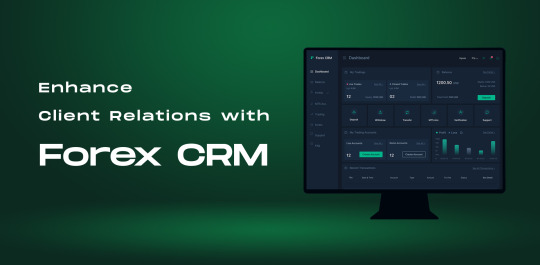
The key to success in the cutthroat world of Forex trading is building and maintaining customer connections. The tools and technologies that enable effective client management change along with the industry. Customer Relationship Management (CRM) software is one such product that has grown to be essential for Forex brokerages.
A Good CRM system is the cornerstone of every profitable Forex brokerage, serving as the primary interface for managing customer relations and optimizing corporate operations as a whole. Choosing the Best CRM solution is essential due to the growing need for efficient operations and tailored services.
Forex brokerages need CRM systems that are not only reasonably priced but also have special features designed to meet their requirements. Presenting ForexCRM, the best CRM solution in the business, which gives brokerages access to cutting-edge features at a reasonable price.

Thanks to ForexCRM and other affordable CRM solutions, brokerages may now affordably manage client interactions with the resources they need. Brokerages of all sizes can make use of CRM's scalable features and features to maximize customer engagement and retention.
ForexCRM's extensive feature set, created especially for Forex brokerages, is what makes it unique. With features like integrated trading platforms, Contest Management, smooth onboarding procedures, sophisticated analytics, Social Trading, and Liquidity Feeds, ForexCRM provides a comprehensive answer to satisfy the many demands of contemporary brokerages.
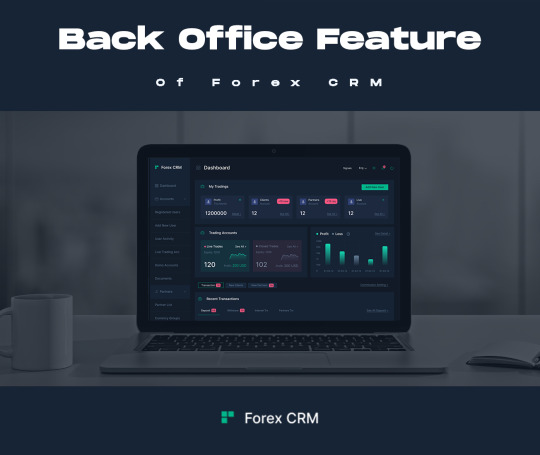
Brokerages may automate tedious operations, optimize communication channels, and obtain insightful data about customer behavior and preferences by utilizing ForexCRM. Brokerages may expand their company, provide individualized services, and cultivate enduring loyalty by centralizing client data and interactions.
ForexCRM provides customized solutions to simplify complex processes, making it an asset for New brokerage Formation, licensing, and regulatory compliance initiatives. With features like compliance checklists and customizable onboarding workflows, ForexCRM streamlines the registration and licensing process and guarantees prompt approvals.

Brokerages may effortlessly manage regulatory compliance while reducing risk thanks to specialized modules for KYC and AML compliance. Furthermore, ForexCRM makes regulatory reporting system connection easier, allowing for accurate submissions and providing transparency to authorities. All things considered, ForexCRM gives brokerages the confidence they need to successfully negotiate regulatory difficulties, which helps them succeed in the cutthroat Forex business.
In summary, CRM is essential to improving client connections in the Forex brokerage sector. Brokerages can stay ahead of the curve by offering great customer experiences and retaining a competitive edge in the industry with feature-rich and reasonably priced systems like ForexCRM. Unlock the full potential of client relationship management for your Forex brokerage by selecting the finest CRM available.
3 notes
·
View notes
Text
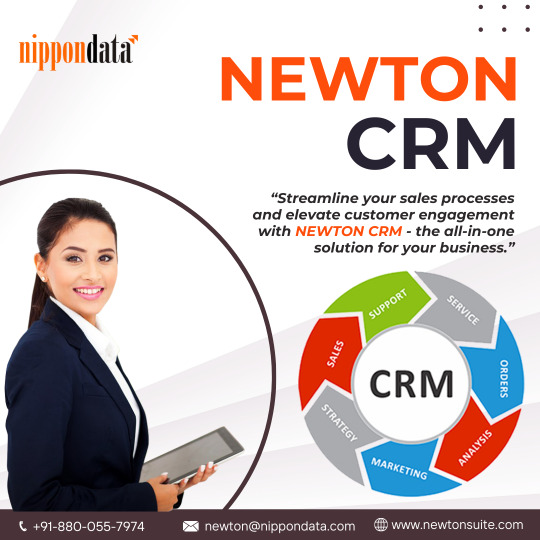
NIPPON DATA SYSTEMS LIMITED is a provider of IT enabled business solutions which provide our clients competitive business advantage. We partner with our customers to deliver business solutions to their satisfaction and help them ‘Live Your Enterprise Potential™’. We take pride in conducting business with the highest degree of ethics and treat each transaction with fairness and honesty.
#crm
2 notes
·
View notes
Text
PMS Pvt ltd Software house
PMS is the Best Software house in Pakistan PMS (Progressive Multimedia Systems) is the best software house in Pakistan and has been registered with PSEB & PASHA since 2007. We offer our services in web designing, API development, digital marketing, graphic designing, SEO, and ICT solutions. PMS software house specializes in creating CRM systems, web applications, and ERP solutions. We believe in software quality which is essential to deliver the product on time and the required quality with all completed requirements. As a leading software company in Gujranwala, Pakistan our products are fully maintainable for any new functionality or requirement.
#tumblr trending#softwarehouse#best web development#bestontumblr#bestsoftwarehouse#best wordpress development company#pms pvt ltd#pms software house#best digital marketing company#best digital marketing agency#digital marketing
2 notes
·
View notes
Text
Unleashing the Power of Free CRM Software for Your Business

Hello there! It’s Paul here, and today we’re going to unlock secrets of a tool that can revolutionize your customer relationships. We’re talking about free CRM software. If you’re on a budget but keen to streamline your business operations, buckle up because we’re about to set you on the right path.
Free CRM software like HubSpot CRM, Agile CRM, Apptivo, Really Simple Systems, and Flowlu are game-changers in the market. But how do you decide which one is best for you? Let’s get into it.
Grasping the Power of Top Free CRM Software
HubSpot CRM and Agile CRM are two gems in the world of free CRM. Each has its distinct forte.
HubSpot CRM is a master at handling marketing CRM features. Its custom fields, deal stages, and contact properties allow you to shape the tool according to your business’s unique requirements.
Agile CRM excels at customer service. It too offers customization options, making it easy for businesses to modify the system to their needs.
Both provide robust customization options, enabling businesses to tailor the software to their specific requirements.
The Hidden Price Tags of Free CRM
While free CRM software can be a boon for small teams and businesses, they do come with some constraints. These include limitations on maximum users, contacts, and company records.
When these limitations start hindering your progress, it’s worth considering upgrading to a paid plan. These usually offer more users, contacts, records as well as some exciting bonus features.
Maximizing Efficiency with CRM Integration
In today’s digital world, integration is key. Merging your CRM with other tools enables seamless syncing and resource sharing. Here’s why it matters:
Efficient Resource Sharing: Integration allows for easy sharing of customer data, documents, and communication history.
Streamlined Workflows: Automated tasks save time and reduce errors.
Improved Customer Insights: Integration provides a complete view of customer interactions.
Enhanced Productivity: Integrated tools ensure everyone is on the same page.
Answering Your Burning Questions about Free CRM
How to choose the best free CRM? What about customization? Are there hidden costs? Can you easily import and export data? What kind of customer support is available?
I’ll be answering all these questions (and more) in our comprehensive guide.
In conclusion - selecting the best free CRM software boils down to your specific needs and limitations. And remember, don’t hesitate to upgrade when you see the need. It could unlock the full potential of your CRM!
Keep hustling, stay inspired, and let’s take your business to new heights! Paul
3 notes
·
View notes
Text
Top Challenges Faced While Implementing Salesforce CPQ
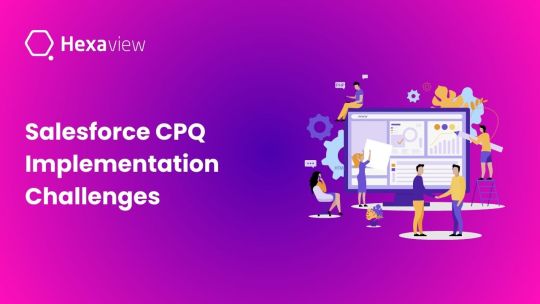
Salesforce CPQ is one of the widely used Salesforce products used by salesperson to create sales quotes easily and with best efficiency.
However, Implementing Salesforce CPQ (Configure, Price, Quote) is not a simple task and requires domain expertise. Businesses often face several challenges while implementing it. Businesses must always consult with Salesforce CPQ Consulting services providers which can ensure them hassle free and quick implementation. So, In this blog, we are going to discuss about the challenges faced during Salesforce CPQ Implementation:
Data Integration: Salesforce CPQ typically needs to integrate with various data sources, such as CRM, ERP, and pricing databases. Ensuring smooth data integration and data quality can be challenging, especially when dealing with legacy systems.
Customization Complexity: Salesforce CPQ is a highly customizable tool, and organizations often need to tailor it to their specific needs. However, extensive customization can lead to complexity and longer implementation timelines. Balancing customization with out-of-the-box functionality is essential.
Pricing Strategy: Determining the right pricing strategy and translating it into Salesforce CPQ rules and configurations can be complex. You need to consider factors like pricing tiers, discounts, promotions, and bundling while ensuring profitability.
Product Complexity: If your organization offers a wide range of complex products with multiple configuration options, managing and configuring these in Salesforce CPQ can be challenging. It's crucial to have a well-structured product catalog and configuration rules.
Unclear Objectives and Business Goals Alignment: It has been found several times that businesses make the decision of implementing technologies in a rush just looking at the emerging technologies. So, they are not able to properly align their business objectives with the technologies and hence proper tool utilization is not done.
Performance Optimization: As the system grows and more users access it, you might encounter performance issues. Regular performance monitoring and optimization are necessary to ensure a smooth user experience.
Scalability & Flexibility: As the business evolves with the time with product offerings and customer base growing and so the Salesforce CPQ solution should be. A solution that cannot be evolved with the time, literally becomes a liability. So, businesses need to ensure that their Salesforce CPQ implementation can scale with their business requirement.
Regulatory Compliance: Depending on your industry, you may need to adhere to specific regulatory requirements related to pricing, quoting, and contracts. Ensuring that Salesforce CPQ meets these compliance standards can be a challenge.
Testing and Quality Assurance: Thoroughly testing the Salesforce CPQ implementation is crucial to identify and resolve any issues before they impact sales operations. Developing comprehensive test plans and involving end-users in testing are vital.
End User Training: It must be ensured that the end users should receive the necessary training required to handle the tool so that they can work efficiently. In many of the cases, it has been found the end users does not enough training and found technical complexities in using the tool.
Ongoing Maintenance and Support: After the initial implementation, you'll need a plan for ongoing maintenance and support. This includes addressing user issues, updating configurations to reflect changes in pricing or products, and applying software updates.
Cost Management: Implementing Salesforce CPQ can be expensive, considering licensing costs, customization, and integration expenses. Managing the budget and ensuring that the project stays within scope can be a challenge.
To address these challenges, organizations should involve key stakeholders, engage with experienced Salesforce CPQ consultants or partners like Hexaview Technologies, and plan the implementation carefully. It's also essential to have a clear roadmap and set realistic expectations for the project timeline and outcomes. Regular communication and feedback loops with users and stakeholders are critical to ensure the success of Salesforce CPQ implementation. Hexaview Technologies is a renowned Salesforce services providers that offers a gamut of Salesforce related services like Salesforce consulting, Salesforce Development Services, Salesforce Data Migration, Migration to Salesforce CRM, Salesforce CPQ consulting etc.
#salesforce cpq#Salesforce cpq consulting#Salesforce cpq consultants#cpq consultants#cpq#cpq software#salesforce#crm
3 notes
·
View notes
Text
Choosing the Right ERP Solution for Your Engineering Business
Productivity and efficiency are essential in today's corporate world if you want to keep ahead of the competition. It is essential for engineering firms to streamline their processes, make the most of their resources, and monitor market developments. Implementing an ERP system is one of the most efficient methods of reaching these objectives. However, picking the best enterprise resource planning (ERP) solution for your engineering firm among the many accessible options can be challenging. Streamline your engineering operations with cutting-edge ERP software. Choose the best ERP software for engineering companies in Indore offered by STERP!
In this blog, we'll explain how to find the best enterprise resource planning (ERP) software for your company.
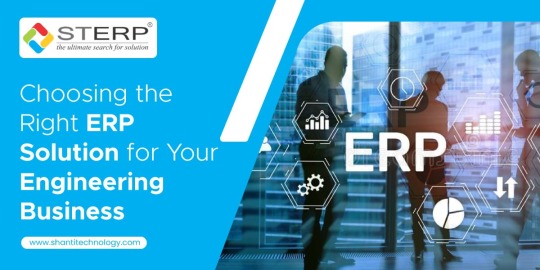
Understanding ERP for Engineering Businesses:
It's crucial to have a firm grasp of what an ERP system is and how it might help your engineering business before diving into the selection process. ERP, or enterprise resource planning, is a suite of applications that allows you to monitor and manage your whole business in real-time.
ERP has the potential to completely alter the way engineering firms manage their daily activities. It includes not just HR and CRM but also project management, resource allocation, inventory control, and financial management. ERP solutions allow engineering organisations to enhance efficiency, cut costs, and make choices based on data by centralising data and automating repetitive processes.
Identifying Your Business Needs:
Finding the best ERP software starts with understanding your company's specific requirements and objectives. A cookie-cutter strategy won't work because no two engineering firms are the same. First, you should do an honest evaluation of yourself to pinpoint your unique problems.
Ask yourself questions such as:
In other words, what are our company's top priorities?
What are the most significant problems we encounter on a regular basis?
Do advanced project management resources come in handy?
Do we have efficient monetary procedures?
Is it our intention to increase the scope of our current offerings?
If you answer these questions, you'll have a better idea of what to look for in an enterprise resource planning (ERP) system. You can use this data as a guide while you investigate various ERP options. Empower your engineering company with STERP - an excellent ERP software company in Indore. Contact us today to learn more!
Evaluate Scalability:
Scalability is a key factor to consider when selecting an enterprise resource planning (ERP) system for your engineering firm. Your ERP system needs to be scalable if it's going to keep up with your expanding company. Choose a plan that can grow with your needs rather than one that would require constant maintenance.
The ability to scale has a major impact on the bottom line. It can be expensive financially to invest in an ERP solution that needs regular updates or replacements as your business grows. An ERP system that can grow with your engineering company guarantees a return on your original investment.
Cloud-Based vs. On-Premises:
Whether you go with a cloud-based or on-premises enterprise resource planning solution is another important choice to make. There are benefits and drawbacks to each option, and you should select one that best fits your company's needs.
ERP solutions hosted in the cloud have the advantages of scalability, portability, and adaptability. Subscription models are common, which can help with initial outlays. On-premises solutions, on the other hand, offer more management and protection but may have higher setup and ongoing costs.
When making this choice, think about your available funds, current IT setup, and requirements for remote access.
Integration Capabilities:
The effectiveness of your ERP adoption depends heavily on how well it integrates with your current set of programmes and resources. Make sure that the enterprise resource planning (ERP) solution you select works well with your current software, including CAD programmes, project management programs, and CRM programs.
Through the elimination of data silos, which are made possible through integration capabilities, businesses gain a more comprehensive understanding of their operations. As a result, it's easier for teams to work together and make more informed decisions. Real-time insights, real results. Choose STERP - the most distinguished Engineering ERP software company in Indore to optimize your engineering projects!
User-Friendly Interface:
The simplicity of the interface is also important. An easy-to-navigate interface has been shown to increase both user retention and output. Employees are more likely to push back on implementation and make mistakes when confronted with complex and clumsy interfaces.
Make sure the ERP software is user-friendly by requesting a sample or trial version before making a final decision. Get input on the system's ease of use by having actual users take part in the testing.
Mobile Accessibility:
Accessing your enterprise resource planning (ERP) system from your mobile device is crucial in today's mobile-centric society. On-site or in client meetings, engineers and project managers frequently need access to crucial data. Your team will be able to communicate and make well-informed decisions in real-time with the help of a mobile-friendly ERP system.
Consider Industry-Specific Features
The specific needs of the engineering industry may not be met by off-the-shelf enterprise resource planning software. You should seek out ERP providers who provide engineering-specific add-ons. Examples of such capabilities include engineering change management, compliance monitoring, and materials management.
Advantages such as best practices and pre-configured modules that fit your business operations are available when you go with an ERP solution made specifically for your sector.
Total Cost of Ownership (TCO):
Total cost of ownership (TCO) is an important metric to use when comparing ERP systems. Maintenance, support, and possible upgrades are included in this category of ongoing costs. ERP vendors should be informed of any financial restrictions you have and questions you have regarding any hidden charges that may occur during deployment.
Vendor Reputation and Support:
The success of your ERP implementation depends on your choice of vendor. Find out what other engineering companies have experienced after using the vendor's solutions by reading evaluations written by those businesses and contacting the vendors' references. ERP solutions engineered for excellence. Partner with STERP - one of the leading ERP software companies in Indore for success!
You should also evaluate the vendor's assistance and training options. Your ERP system's easy adoption and utilisation is directly correlated to the quality of your support personnel and the depth of your training materials.
Final Thoughts:
The future success of your engineering company hinges on your ability to select the optimal enterprise resource planning (ERP) solution. You should look at the whole picture, taking into account things like scalability, integration, ease of use, and industry-specific functionality.
Spending the time and energy to find the ERP system that works best for your engineering company will not only boost operational efficiency but will also set you up for sustained success in a cutthroat industry. When you take the time to assess your requirements and the available options, you can make a choice that supports your company's growth and helps it achieve its goals. Connectivity, Precision, Performance. Connect with STERP one of the popular ERP solution providers in Indore for cutting-edge ERP software for engineering!
#ERP software for engineering companies in Indore#ERP Software Company in Indore#Engineering ERP Software Company in Indore#ERP software Companies in Indore#ERP solution providers in Indore
6 notes
·
View notes
Text
QuickBooks vs Sage: A Comprehensive Comparison for Small Businesses
Introduction
As a small business owner, choosing the right accounting software can be a daunting task. With so many options out there, it's hard to know which one is the best fit for your needs. Two of the most popular options on the market are QuickBooks and Sage. But how do they compare?
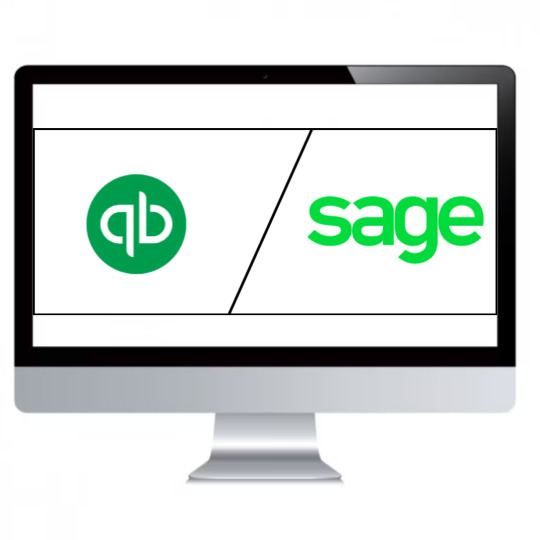
In this QuickBooks vs Sage comprehensive comparison, we'll take a look at both QuickBooks and Sage's features, pricing, pros and cons to help you make an informed decision about which software is right for your small business. So let's dive in!
QuickBooks Overview
QuickBooks is one of the most popular accounting software solutions for small businesses. It was developed and marketed by Intuit, a company that specializes in financial and tax preparation software. QuickBooks is known for its user-friendly interface and extensive features that cater to various business needs.
One of the key benefits of using QuickBooks is its ease of use. The software can be easily installed on your computer or accessed through the cloud-based version, making it accessible anytime, anywhere. Additionally, QuickBooks has a simple dashboard that allows users to track their expenses, income, and profits with just a few clicks.
Another great feature of QuickBooks is its ability to integrate with other applications such as PayPal and Square. This integration makes it easier for businesses to manage their finances without having to switch between multiple platforms.
Moreover, QuickBooks offers several versions tailored to suit different types of businesses including self-employed individuals, small business owners and accountants who work with multiple clients at once. These versions come with varying features such as invoicing capabilities, inventory management tools among others.
If you are looking for an accounting solution that offers easy accessibility combined with extensive functionality then QuickBooks could be the perfect fit for you.
Sage Overview
Sage is another popular accounting software that caters to small and medium-sized businesses. It offers a variety of features that help in managing finances, invoicing customers, and tracking expenses.
One of the key advantages of Sage is its flexibility. It provides users with various customization options to tailor the software's interface according to their needs and preferences. Additionally, it has an intuitive dashboard that displays all important financial information at a glance.
Apart from standard accounting functionalities like bookkeeping and bank reconciliation, Sage also offers advanced inventory management features such as order fulfillment tracking and automated reordering.
Another notable aspect of Sage is its integration capability with other business tools like Microsoft Office 365, Salesforce CRM, and Shopify eCommerce platform. This allows for seamless data exchange between different software applications used by businesses.
Sage is a robust accounting solution suitable for businesses looking for advanced features beyond basic bookkeeping. Its customizable interface and integration capabilities make it stand out among competitors in the market.
QuickBooks vs Sage Feature Comparison
When it comes to comparing QuickBooks vs Sage, one of the most important things to look at is their features. Both software solutions offer a range of tools and functions that can help small businesses manage their finances effectively.
QuickBooks has always been known for its strong focus on accounting features. It offers a comprehensive suite of tools designed to handle everything from invoicing and billing to expense tracking and payroll management. In addition, QuickBooks also provides robust reporting capabilities that enable business owners to get insight into the financial health of their company in real-time.
On the other hand, Sage boasts an impressive array of specialized features that cater specifically to certain industries such as construction, manufacturing, or distribution. These industry-specific functionalities allow businesses operating in these sectors to streamline operations by automating tasks like inventory tracking or job costing.
While both platforms have plenty of useful features for small businesses, it's important to consider which ones are more relevant based on your specific needs. Take some time to evaluate your business requirements before making a decision between QuickBooks vs Sage.
QuickBooks vs Sage Pricing Comparison
When it comes to pricing, both QuickBooks and Sage offer a range of plans that cater to different business needs and budgets. However, there are some notable differences between the two.
QuickBooks offers four main pricing plans: Simple Start, Essentials, Plus, and Advanced. Prices start at $25 per month for Simple Start and go up to $180 per month for Advanced. Each plan includes features like invoicing, expense tracking, and basic reporting tools.
On the other hand, Sage has three main pricing tiers: Accounting Start ($10/month), Accounting ($25/month), and Accounting Premium ($71.67/month). While these prices may seem lower than QuickBooks' offerings on the surface level, it's important to note that each tier is limited in terms of features compared to what QuickBooks offers.
Additionally, both QuickBooks and Sage offer add-ons such as payroll processing or inventory management for an additional cost. It's important for businesses to carefully consider their needs when deciding which plan is right for them.
Ultimately, while there are differences in price between the two platforms depending on your business size and needs; finding out which one works best will depend entirely upon your specific budgeting goals as well as overall objectives
Pros and Cons
When comparing QuickBooks and Sage, it's important to consider the pros and cons of each software. First, let's take a look at some of the advantages of using QuickBooks.
One of the major benefits of QuickBooks is its user-friendly interface. Even if you are not an accounting expert, you can easily navigate through this software. It has a simple dashboard that provides a clear overview of your financial records. Also, it offers robust features such as invoicing, expense tracking and payroll management.
On the other hand, Sage also has its own set of pros. One advantage is its customization capability which allows users to tailor-fit their accounting processes based on their business needs. Additionally, Sage enables multi-user access which supports collaboration among team members in real-time.
However, there are also some cons to consider for both software options. For example, QuickBooks may be too basic for larger businesses with more complex accounting requirements while Sage may have a steeper learning curve compared to other accounting platforms.
Ultimately, deciding between QuickBooks or Sage will depend on your business size and specific needs when it comes to bookkeeping and accounting processes.
Conclusion
After weighing the advantages and disadvantages of QuickBooks vs Sage, it is evident that both software programs have their unique features and benefits. Ultimately, the choice between them depends on a business's specific needs.
QuickBooks is an excellent choice for small businesses looking for easy-to-use bookkeeping software with robust accounting features, mobile accessibility, and affordable pricing options. On the other hand, Sage offers more extensive customization options and advanced reporting capabilities.
Before making any decision about which bookkeeping software to use in your business, you should conduct thorough research into each program's features. However, regardless of which option you choose; investing in either QuickBooks or Sage will give your small business a competitive edge when it comes to managing finances effectively.
3 notes
·
View notes
Text
Why SAP global certification is the Best program for career growth & global job opportunity?
What is SAP? SAP is System Application and Products in Data processing. Nowadays having a proper certification can significantly boost ones career and open doors for global job opportunities. One such leading programs is SAP which provides enterprise software solutions. SAP software is an European multinational company, they focus on providing software solutions for better understanding and management of business and their customers.
Some of the comprehensive courses provided by SAP are finance, logistics, human resources and many more. The course certification is acknowledged on global basis.
One of the key advantages of the SAP global certification program is its recognition worldwide. With over 400,000 customers in more than 180 countries using SAP solutions, there is a high demand for professionals with SAP skills across the globe .This opens up a plethora of job opportunities on a global scale.
Benefits of SAP courses
Streamlined Processes: SAP helps organizations streamline their business processes by automating tasks, eliminating the manual effort, and reducing inefficiencies.
Enhanced Decision-Making: the course provides robust data management and analytics capabilities, enabling organizations to access real-time, accurate information.
Improved Collaboration and Communication: It enables the seamless integration and data exchange between different functional areas, enhancing cross-functional collaboration and teamwork.
Increased Visibility and Control: SAP offers comprehensive visibility into organizational data, processes, and operations.
Scalability and Flexibility: SAP solutions are scalable and flexible, accommodating the changing needs and growth of organizations.
Enhanced Customer Experience: SAP's customer relationship management (CRM) solutions enable organizations to deliver a personalized and exceptional customer experience.
Improved Supply Chain Management: It enables organizations to improve demand planning, inventory management, procurement, and logistics, resulting in reduced costs, improved order fulfillment, and better customer satisfaction.
Compliance and Risk Management: It provides functionalities for governance, risk management, and compliance (GRC), helping organizations mitigate risks, ensure data security, and demonstrate compliance with legal and industry regulations.
Innovation and Digital Transformation: SAP embraces emerging technologies and drives innovation to support organizations in their digital transformation journey.
As multinational companies expand their operations across borders, they require professionals who can support and manage their SAP software system worldwide. This opens up many possibilities for career growth in international work experiences and also being an SAP certified professional it can also lead to higher earning potential, individuals with an SAP certificates tend to earn more as compared to their non-certified counterparts. This financial incentive further emphasizes the value of investing in an SAP global certification for career growth.
Job opportunities in SAP
SAP Consultant: SAP consultants provide expertise and guidance on implementing, configuring, and customizing SAP solutions to meet the specific needs of organizations
SAP Functional Analyst: SAP functional analysts focus on understanding business requirements and translating them into functional specifications for SAP solutions.
SAP Technical Developer: They are responsible for developing, customizing, and maintaining SAP applications.
SAP Project Manager: SAP project managers oversee the planning, execution, and delivery of SAP implementation or upgrade projects
SAP Administrator: SAP Basis administrators manage the technical infrastructure of SAP systems. They are responsible for system installation, configuration, monitoring, performance optimization, and security management of SAP landscapes
SAP Data Analyst: SAP data analysts focus on managing and analyzing data within SAP systems. They extract and manipulate data, perform data validation, create reports and dashboards.
SAP Supply Chain Consultant: SAP supply chain consultants work on projects related to supply chain management, procurement, inventory management, logistics, and production planning using SAP solutions.
Why is SAP global certification important?
SAP Global Certification is important as it validates an individual’s skills, acquires an industry recognition, provides a competitive advantage, strengthens career opportunities, opens up global job prospects, promotes continuous learning, and instills employer confidence. Thus considered a valuable investment for professionals seeking career growth in the field of SAP and for organizations looking to hire skilled SAP professionals.
#course#sap course#education#learning#career#student#careeropportunities#sap online training#productivity
2 notes
·
View notes
Text
Salesforce Implementation Partners: Missing Link in the Picture?
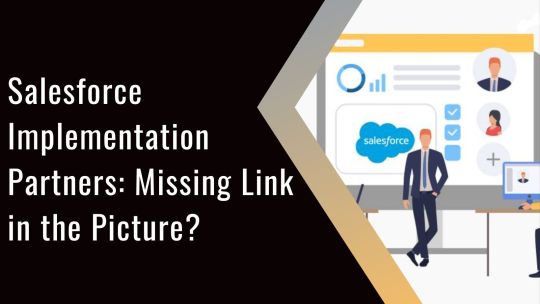
Salesforce is a powerful platform with amazing features and endless capabilities. Businesses, regardless of the industry verticals, look forward to implementing Salesforce to strengthen their relationship with customers. Though it might sound simple and easy, starting an implementation without diligent preparation and planning often results in poor outcomes, which can require time-consuming and costly rework—this is where Salesforce implementation partners come to your rescue.
This blog answers some of the most common questions that people often have about working with a Salesforce implementation partner. In addition, it also tells you how to make the most of this strategic collaboration.
In response to changes in customer behaviors, businesses of varying sizes and scopes are accelerating their digital transformation initiatives. A majority of them are interested in employing integrated, access-from-anywhere kind of solutions such as a Customer Relationship Management (CRM) software/platform— just like the ones offered by Salesforce.
Here is what the statistics have to say about one of the fastest-growing categories of enterprise software: the global spending on Salesforce is projected to be around 675 billion U.S. dollars in the current year. In the previous year, Salesforce took approximately 24% market share of the global CRM applications market.

Going forward, exploring a Salesforce CRM solution is one aspect; knowing what applications, products, as well as configurations best suit your business-specific needs is totally another matter. Perhaps, this is why a majority of Salesforce customers resort to accredited experts to ease their entry into the world of Salesforce. These dedicated experts are your implementation partners. There is a wide network of Salesforce implementation partners that assist businesses to achieve their CRM goals quickly and effectively.
What is an Implementation Partner?
To put it in simple words, an implementation partner is a company that has been approved by Salesforce after reviewing it to implement Salesforce CRM solutions on its behalf where each implementation partner specializes in some specific areas, applications, or industries. This implies that there is a partner that caters to every business need, challenge, product, industry vertical, region, etc., and assists us along the entire Salesforce journey.
Why do Businesses Need an Implementation Partner?
Salesforce CRM solutions are known to cover the entire spectrum of business operations, which include marketing, sales, service, as well as sustainability. Each of its products can be bolstered via platform-to-platform integrations and add-on applications.
In other words, the entire Salesforce ecosystem offers endless capabilities—where the main challenge is to select the right product with the integrations and configurations that best fit your business-specific needs. Consider the case in point, a big organization might already be working with multiple technological solutions. They want to figure out how a Salesforce product, for example, Marketing Cloud, can be integrated with their existing workflows without causing friction, and are looking for assistance for the same.
Take another case in point, a smaller company might be scaling upwards quickly. They also know that continuing to work with spreadsheets would not support their growth. Amidst this, they realize that they must automate their processes—or it is time to develop more streamlined and personalized customer experiences.
Implementing a CRM solution for the first time can be daunting for a majority of companies. It is a challenging task for internal teams or employees with no experience in Salesforce to take into consideration all the variables as well as implement a new and highly configurable CRM solution. Besides, hiring a full-time employee to look after the CRM implementation process can also be a costly avenue.
These were some of the situation-specific reasons that a significant chunk of Salesforce customers resort to partner applications and experts.
When is the Right Time to Engage with Implementation Companies?
As early as possible would be apt if it were to be answered in a nutshell.
You need to do your due diligence, just like you do with any significant investment. First of all, figure out what needs have to be met, gaps that have to be closed, or issues that need to be addressed. Talking of the Salesforce implementation case, you must formulate a vision of what you want to achieve that is the ‘what.’ After this, determine the ‘how,’ which is often the most complicated part for any business.
It is time to bring in a partner as soon as you figure out your goals. The right implementation partner will not just facilitate the ‘how,’ but they’ll also help you crystallize the ‘what’. They will assist you to clarify your success metrics, understanding what is realistic, as well as advise on appropriate products. Accordingly, the experts will lay out a logistically sound timeline for your implementation journey to finish it off.
It is important to note that bringing in a partner late in the game usually results in missed opportunities—in terms of understanding and scope. As the relationship between a partner and a customer is close and collaborative, the only secured way to ensure seamless implementation is when the journey begins together.
How to Figure Out the Right Implementation Partner?
Some of the implementation partners have generalized Salesforce capabilities. More often than not, these companies specialize in particular functions or areas of the CRM solution. While some might specialize in customer data platforms (CDP) or Marketing Cloud, others might specialize in harnessing the combined powers of Einstein and Sales Cloud.
Another factor is value alignment, which has come to the forefront in recent years. People want to work with companies that share their values. What we mean here is that people prefer to work with an organization that prioritizes sustainability or champions diversity and equality.
Shopping around is a good practice irrespective of whether or not these things are top-of-mind for you. Interact with different Salesforce partners, get a feel of who they are, know the way they work, and so on. As this is an important relationship, we would recommend you not settle for anything less than the right fit for your business.
Salesforce AppExchange is the best as well as a most comprehensive resource for both partners and products. There are plenty of experts and numerous applications at your fingertips where one can also browse specializations, certifications, and customer reviews.
In short, certifications, as well as credentials come into play as does the specific expertise of that implementation company.
What Challenges Might a Business Encounter During Implementation?
It has already been stressed enough that bringing in a partner as early as possible decreases the chances of challenges that might be emerging down the line.
What is also important apart from this is to be clear on what you want to solve, plus how you measure success over time. Most instances of dissatisfaction or confusion emerge from a lack of understanding on the part of the partner or the customer. Fault assumptions can be made and misunderstandings on capabilities and timelines can arise if both the parties, partner and customer are not on the same page. This makes goals, objectives, and success benchmarks harder to be reached.
As a customer, you need to be as transparent as you want your Salesforce implementation partner to be. Genuine advice is that you should never be afraid to ask questions more than once and it is better to clear all the doubts that you have got—the implementation process is highly technical in nature and seeking clarification in this is quite natural.
Just as stakeholders place the customer at the center of their business, Salesforce implementation partners place them at the center of theirs. Also, they measure their success by aligning the outcomes to your business-specific needs; in other words, by delivering exactly what you need. For dedicated Salesforce implementation companies customer success equals partner success.
Last but not the least, every successful relationship in life thrives on honest, open communication from the outset; and the Salesforce implementation partnership is no exception to this rule.
Final Thoughts
To achieve exceptional results and maximize license usage, it is important to ensure that your Salesforce solution is fully tuned to business-specific needs and well-adopted by your organization. To maximize the success of Salesforce implementation, you need to engage with a Salesforce implementation partner.
You might be missing out on the potential opportunities in terms of scope and understanding, due to insufficient resources or skill gaps. Besides, the relationship between an implementation partner and a customer is collaborative and close. So, the only way to ensure a successful implementation is when the journey begins together.
The next step is to meet and network with different partners to get a feel of who they are, what is their way of working, and so on—this is an important relationship, so you must not settle for anything less than the best fit for your business. Now that you know what is right for you, it is time to make the move.
#salesforce implementation partners in india#salesforce implementation partners#salesforce implementation companies in india#salesforce implementation companies#salesforce implementation services#salesforce implementation consultant#salesforce implementation company#salesforce cloud implementation#salesforce cpq implementation partners
1 note
·
View note
Text
Can a $10,000 Investment in Palantir Technologies Turn Into $1 Million by 2035?
Summary
Adam Levy
Palantir has already made lots of investors very wealthy in just two and a half years.
Palantir Technologies (PLTR 1.00%) has been one of the biggest winners of the artificial intelligence (AI) boom of the last few years. If you had invested $10,000 in the stock at the start of 2023, you'd have about $200,000 worth of the company, as of this writing. At its current rate, it seems like only a matter of time until that $10,000 investment turns into $1 million.
But can investors reasonably expect a $10,000 investment in Palantir today to turn into $1 million by the end of 2035? Here's what it'll take for Palantir to 100x over the next decade.
A silhouette of a person in front of a Palantir sign.
Image source: Getty Images.
Where will Palantir be in 10 years?
Palantir has seen fantastic growth in its business, mostly thanks to the success of its Artificial Intelligence Platform (AIP). The AIP makes its software, which takes big data sets and draws actionable insights for enterprises and governments, accessible to almost anyone by leveraging natural language processing. Instead of having to get nitty-gritty with the data, a user can easily interact with proprietary data with the help of AI to build new applications and workflows and make decisions.
AIP expands Palantir's user base beyond data scientists and specialists. It also allows an enterprise to incorporate Palantir's software into more parts of its business where users might not be as technically savvy. As a result, Palantir has seen extremely strong growth, particularly among U.S. commercial customers. U.S. commercial revenue climbed 71% year over year last quarter.
Management expects revenue to come in between $3.89 billion and $3.902 billion for 2025. That's a growth rate of about 36% for the year, accelerating from last year's 29% growth. As the fast-growing U.S. commercial revenue continues to become a bigger part of its business, growth could continue accelerating for some time.
If Palantir keeps up an average 35% revenue growth pace through 2035, it'll generate over $75 billion in annual revenue that year. Considering the high margins of software-as-a-service (SaaS) businesses, that could be an extremely profitable business. For example, Salesforce (CRM 0.09%), a much bigger SaaS company, has an operating margin exceeding 20% at roughly $38 billion in annual revenue. It's not unreasonable to expect a company twice that size to produce 25% or even 30% operating margin. As such, Palantir could be generating over $20 billion in operating profits in 2035 if it remains on the current growth trajectory.
Those are lofty projections, but not completely outside of the realm of possibility for a company with the potential of Palantir. But that's a bullish case.
Where to invest $1,000 right now
When our analyst team has a stock tip, it can pay to listen. After all, Stock Advisor’s total average return is 975% — a market-crushing outperformance compared to 172% for the S&P 500.
They just revealed what they believe are the 10 best stocks for investors to buy right now, available when you join Stock Advisor.
See the stocks ›
*Stock Advisor returns as of May 12, 2025
Today's Change
(1.00%) $1.28
Current Price
$129.40
Key Data Points
Market Cap
$306B
Day's Range
$126.77 - $130.33
52wk Range
$20.63 - $133.49
Volume
57,003,724
Avg Vol
112,984,084
Gross Margin
80.01%
Dividend Yield
N/A
Is that enough to grow your investment to $1 million?
To turn $10,000 into $1 million, Palantir will need to increase in value 100-fold. Today, the company is worth about $300 billion. That means it needs to be worth $30 trillion in 2035. Keep in mind, the most valuable companies today are worth $3 trillion. So, $30 trillion is a big ask.
Further working against Palantir is its current valuation. The stock currently trades for a price-to-sales ratio exceeding 100. Even on a forward-looking basis, the price is more than 75 times expected sales. Likewise, Palantir's enterprise-value-to-EBITDA multiple is extraordinarily high at about 160 times forward estimates. By comparison, Salesforce trades for 7.5 times sales and about 25 times EBITDA.
It's unlikely Palantir will be able to maintain that valuation as it grows larger. High expectations are already baked into the stock. Hence, when management raised its full-year revenue outlook by 4 percentage points earlier this month, the stock actually fell.
Even if Palantir maintains its outrageously high valuation multiple next decade, its growth won't be enough to turn $10,000 into $1 million. If its valuation comes down to Salesforce levels, it might be worth double its current value in 10 years, and that's based on a relatively bullish outlook for the business.
Doubling your investment in 10 years would translate to a compound annual return of just 7.2% over the next decade, which is below the S&P 500's historic average. That's probably not what Palantir investors are looking for. So, not only is Palantir unlikely to turn $10,000 into $1 million over the next decade, it might even underperform the market. And that's almost entirely due to its extremely high valuation today.
Should you buy stock in Palantir Technologies right now?
Before you buy stock in Palantir Technologies, consider this:
The Motley Fool Stock Advisor analyst team just identified what they believe are the 10 best stocks for investors to buy now… and Palantir Technologies wasn’t one of them. The 10 stocks that made the cut could produce monster returns in the coming years.
Consider when Netflix made this list on December 17, 2004... if you invested $1,000 at the time of our recommendation, you’d have $642,582!* Or when Nvidia made this list on April 15, 2005... if you invested $1,000 at the time of our recommendation, you’d have $829,879!*
Now, it’s worth noting Stock Advisor’s total average return is 975% — a market-crushing outperformance compared to 172% for the S&P 500. Don't miss out on the latest top 10 list, available when you join Stock Advisor.
See the 10 stocks ›
*Stock Advisor returns as of May 13, 2025
0 notes
Text
A Guide to Choosing the Best Activity Based Costing Software
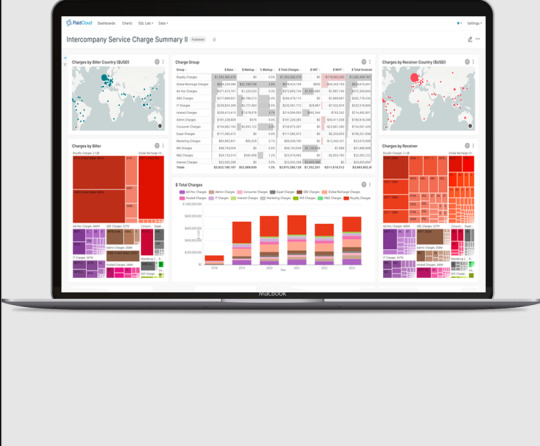
Activity-Based Costing (ABC) has become an essential method for many businesses aiming to accurately allocate costs to specific activities, products, or services. This approach helps companies identify areas of inefficiency, understand true cost drivers, and make more informed financial decisions. To implement Activity-Based Costing successfully, you need robust Activity Based Costing Software that can handle complex data, allocate costs accurately, and integrate with your existing financial systems.
Choosing the right software for Activity-Based Costing can be a daunting task, as the market offers a variety of options that vary in features, usability, and cost. In this guide, we’ll explore the key factors to consider when selecting Activity Based Costing Software and help you find the best tool for your business needs.
What is Activity-Based Costing?
Activity-Based Costing is a costing method that assigns overhead costs to specific activities based on their actual consumption. This method helps businesses understand the true cost of each product, service, or process by focusing on activities as the fundamental cost drivers. Unlike traditional costing methods, which allocate overhead based on broad measures like direct labor hours or machine usage, ABC provides a more accurate way to trace costs to the activities that cause them.
Implementing Activity Based Costing Software is crucial for businesses looking to gain a detailed understanding of where costs are being incurred and identify opportunities for improvement.
Key Features to Look for in Activity-Based Costing Software
1. Ease of Use and User Interface
When evaluating Activity Based Costing Software, one of the most important factors to consider is ease of use. The software should have an intuitive and user-friendly interface, allowing employees to quickly learn how to use it and input data without requiring extensive training.
Look for software with clear dashboards, visualizations, and easy-to-navigate menus. A complex system may be difficult for your team to adopt, leading to errors or inefficiencies in the long run.
2. Cost Allocation and Flexibility
One of the key advantages of ABC is its ability to allocate costs more accurately. Ensure that the software allows for flexible cost allocation, where you can assign costs based on multiple drivers and activities. This flexibility is essential for businesses with complex cost structures, as it enables more granular control over how costs are attributed to various products, services, or processes.
The software should also support a range of allocation methods, so you can customize it to fit the specific needs of your business.
3. Integration with Existing Systems
A crucial factor in choosing the right Activity Based Costing Software is its ability to integrate seamlessly with your existing financial systems, such as Enterprise Resource Planning (ERP) and accounting software. Integration reduces data entry errors, ensures consistency, and saves time by automating the transfer of financial data between systems.
Before selecting a solution, check if the software supports the tools you already use, whether it’s an accounting package, CRM, or other business management tools. This integration will allow for smoother, more accurate data analysis.
4. Reporting and Analytics Capabilities
Accurate and comprehensive reporting is a significant benefit of Activity Based Costing Software. The software should be able to generate detailed reports that clearly show how costs are allocated and the impact on profitability. Look for features such as customizable report templates, visual charts, and graphs that make it easy to analyze data and identify trends.
The software should also allow for comparative analysis, so you can easily compare costs across different periods, activities, or business units. Strong analytics capabilities help in making informed decisions based on real-time financial data.
5. Scalability
As your business grows, your costing needs will likely evolve. Choose Activity Based Costing Software that can scale with your company. The software should be able to handle increasing amounts of data, more complex cost allocation, and additional business units or regions without compromising performance.
Look for solutions that allow you to add new users, integrate additional features, or expand to multiple departments or locations as your business expands.
6. Support and Customer Service
A strong customer support team is essential when implementing any new software. Look for Activity Based Costing Software providers that offer excellent customer support through various channels, including phone, email, and online chat.
Additionally, consider the level of support available for training, troubleshooting, and system updates. Good software vendors will provide onboarding assistance, tutorials, and comprehensive documentation to help your team make the most of the software.
How to Choose the Right Activity-Based Costing Software
1. Identify Your Business Needs
Before choosing Activity Based Costing Software, take the time to clearly define your business requirements. What type of data will you be tracking? How complex are your cost allocation processes? Will you need to integrate the software with other systems? Understanding your needs will help you narrow down the software options that will work best for your business.
2. Consider Your Budget
The cost of Activity Based Costing Software can vary widely depending on the features, scalability, and support offered. Be sure to evaluate the total cost of ownership, including implementation, training, and ongoing maintenance, to ensure that the software fits within your budget.
While it might be tempting to go for the cheapest option, it’s important to balance cost with the software’s functionality and scalability. A solution that saves you time, improves accuracy, and enhances decision-making is an investment that will pay off in the long term.
3. Request Demos and Trials
Most software providers offer free trials or live demos to allow you to evaluate the software’s features and usability. Take advantage of these opportunities to test out the software and see how well it aligns with your business needs. It’s also a chance to ask questions and get a feel for the customer support experience.
Conclusion
Choosing the right Activity Based Costing can significantly improve your business’s cost management and decision-making processes. By selecting a solution that is easy to use, integrates well with existing systems, and offers robust reporting and analytics, you can gain a deeper understanding of your business’s financial performance. Remember to evaluate your business needs, budget, and future growth when making a decision.
With the right software in place, you’ll be able to allocate costs more accurately, identify inefficiencies, and optimize your business operations for greater profitability. By investing in the right Activity Based Costing Software, you can ensure your company is well-equipped to navigate the complexities of modern financial management.
0 notes
Text
A Comparison Guide to Help You Pick the Best Rental Software

In today's highly competitive rental business, the efficient management of inventory, bookings, payments, and customer relations defines the success of any company. If it is a production rental, equipment rental, or event rental business, the selection of rental software could streamline the processes, mitigate errors, and maximize profits. With hundreds on the market, it is helpful to understand their key features and differences. This will allow you to compare competing solutions and choose the best rental inventory tracking solution for your needs.
Why Rental Software Is Important
Rental businesses often have to deal with a lot of complicated tasks, like keeping track of tools, making reservations, billing customers, and keeping assets in good shape. Using old or manual tools or methods can cause misunderstandings, double bookings, a lack of supplies, and unhappy clients. These jobs are now done automatically by modern production rental software, which gives you real-time data, smooth connections, and easy-to-use interfaces. This not only makes things run more smoothly, but it also makes customers happier and helps your business grow.
Key Features to Look For
When looking for a rental management system, keep these features in mind:
Inventory Management & Tracking: Equipment and assets, along with inventory, should be accurately tracked in real time.
Reservation & Booking System: Scheduling and booking online with ease for customers.
Billing & Invoices: All sorts of billing and payment are generated and collected automatically, plus detailed financial reports.
Reporting & Analytics: Evaluate such metrics as the usage of assets, profitability, and operations as a whole.
Maintenance Management: Track when servicing, repairs, and preventive maintenance are done on equipment.
Integration & Customization: Able to integrate with accounting software, CRM, and other tools.
User Interface: Easy to navigate so that staff and customers spend little time on training.
Comparing Leading Rental Software Solutions
A brief overview of some of the Best rental inventory tracking solution helps you pick the rental inventory tracking solution that suits your particular business needs:
1. Intuitive Rental Management Platforms
Overview: These have been touted as the most user-friendly, fully capable of managing rentals.
Strengths: Inventory tracking, online reservations, and invoices.
Ideal For: Equipment, event, and production rental businesses that prefer less complexity.
Highlights: Some of the strongest inventory features are capable of uniting real-time updates with effective resource allocation.
2. Industry-Specific Rental Software
Overview: Created specifically for production, event, or AV rental companies.
Strengths: Project planning, resource scheduling, and asset management at the highest levels of detail.
Ideal For: Production companies where equipment and asset tracking must become so precise and formal.
Highlights: Best solution for rental inventory tracking of production assets, allowing for thorough and formal tracking of resource allocation and usage.
3. Flexible Cloud-Based Rental Systems
Overview: A customizable cloud-based system serving numerous locations.
Strengths: Inventory tracking, CRM, and integration with varied commercial programs.
Ideal For: Growing rental businesses with diverse needs across different locations.
Highlights: Financial software integration for billing and accounting is smooth.
4. Advanced Asset & Maintenance Management Platforms
Overview: Asset tracking, maintenance scheduling, and asset lifecycle management.
Strengths: Works well for large companies with large inventories of equipment of different types.
Ideal for: Businesses whose inventory is complicated and is strict about maintenance and asset lifecycle tracking.
Highlights: Best rental inventory tracking for tracking large, complicated assets efficiently.
How to Choose the Right Rental Software
While selecting Production rental software, keep these in mind:
Business Size & Industry: Bigger or specialized businesses may require complex features for detailed asset tracking and project management.
Budget: Consider starting costs in addition to recurring subscription or licensing fees.
Ease of Use: An intuitive interface could reduce training time and increase adoption.
Support & Training: Dependable customer support and training materials will facilitate a smooth implementation.
Scalability: Ensure the solution can grow with your business and adapt to future needs.
Take time to compare options, assess features, and then choose the platform best suited for your business goals. This well-considered choice will lead your rental company to success in a competitive marketplace.
0 notes
Text
Comparing the Best ERP Software Providers in Dubai: Features, Pricing & Support

In the competitive business landscape of Dubai, Enterprise Resource Planning (ERP) systems have become essential for organizations seeking efficiency, control, and growth. However, with several ERP software providers available in the region, choosing the right one can be a complex decision. This article compares the best ERP software providers in Dubai, focusing on features, pricing, and support to help businesses make informed choices.
Why ERP Matters for Businesses in Dubai
Dubai’s fast-paced economy, dynamic regulations, and diverse business sectors demand robust and scalable ERP solutions. The right ERP system can streamline finance, HR, sales, inventory, procurement, and more—under one unified platform. But the value of ERP software lies not only in its capabilities but also in the provider's ability to offer responsive support and flexible pricing models.
Top ERP Software Providers in Dubai
1. SAP Business One (by Seidor MENA & Partners)
Features: Comprehensive modules for finance, CRM, supply chain, manufacturing, and analytics.
Pricing: Subscription-based; varies based on user licenses and modules.
Support: Strong local presence with certified SAP consultants in Dubai; 24/7 support available.
Ideal for: Medium to large enterprises with complex operational needs.
2. Oracle NetSuite
Features: Cloud-based ERP with real-time dashboards, financial management, e-commerce, and CRM.
Pricing: Tiered pricing model; entry cost is relatively high.
Support: Global support with dedicated regional consultants in the UAE.
Ideal for: Growing businesses needing scalability and automation.
3. Microsoft Dynamics 365 (through local partners like Levtech or Intertec)
Features: Modular ERP for sales, HR, finance, operations, and customer service.
Pricing: Per-user per-month pricing with customizations available.
Support: Excellent integration with Microsoft ecosystem and local support options.
Ideal for: Businesses already using Microsoft tools seeking integration and flexibility.
4. Focus ERP (Focus Softnet)
Features: Customizable modules for accounting, inventory, HR, payroll, and more.
Pricing: Competitive pricing; flexible plans for SMEs.
Support: Strong regional support with offices across Dubai and GCC.
Ideal for: SMEs and mid-sized businesses looking for budget-friendly ERP with customization.
5. TallyPrime with ERP Extensions
Features: Accounting-focused ERP with add-ons for inventory, compliance, and payroll.
Pricing: One-time licensing with optional yearly support fee.
Support: Extensive reseller network and local consultants in Dubai.
Ideal for: Small businesses prioritizing accounting and VAT compliance.
Key Comparison: Features, Pricing & Support
ERP Provider
Core Features
Pricing Model
Local Support in Dubai
SAP Business One
End-to-end ERP, advanced reporting
Subscription/licensing
Strong; certified consultants
Oracle NetSuite
Cloud ERP, scalable modules
Premium-tiered
Global + local consultants
Microsoft Dynamics 365
Modular ERP, seamless Microsoft integration
Per-user/month
Excellent via local partners
Focus ERP
Customizable, industry-specific solutions
Budget-friendly
Strong regional presence
TallyPrime + ERP Add-ons
Accounting-focused with extensions
One-time + annual fee
Widespread local resellers
Final Thoughts: Which ERP Is Best for Your Dubai Business?
When choosing the best ERP software provider in Dubai, it’s vital to consider your business size, industry, scalability needs, and budget. Here’s a quick guide:
For enterprise-grade scalability: SAP Business One or Oracle NetSuite.
For Microsoft-centric operations: Microsoft Dynamics 365.
For cost-effective, customizable ERP: Focus ERP.
For accounting-focused ERP with VAT support: TallyPrime with ERP extensions.
A well-matched Best ERP Solutions Dubai can significantly improve operational efficiency, decision-making, and long-term growth. Be sure to consult with local ERP experts who understand Dubai’s market dynamics and regulatory environment.
Need help choosing the right ERP solution in Dubai? Contact us for a personalized consultation to find the perfect fit for your business.
0 notes
Text
Maximizing ROI: Best Practices for Utilizing Sales Automation Software Effectively

In today’s competitive sales landscape, simply having sales automation software isn’t enough. To truly maximize your return on investment (ROI), businesses must implement smart strategies and use the software to its full potential. Whether you're managing inbound leads, running outbound campaigns, or nurturing long-term prospects, the right practices can turn your sales automation tool into a revenue-generating engine.
Understand Your Sales Process First
Before jumping into automation, take time to map out your current sales process. From lead generation to final conversion, know every stage your prospects go through.
Why it matters: Automation should enhance, not complicate, your workflow. Knowing your sales cycle ensures you automate the right tasks at the right time.
Set Clear Goals and KPIs
To track ROI effectively, you need to define what success looks like. Is it more leads? Faster conversions? Shorter sales cycles? Set clear KPIs such as:
Lead response time
Number of follow-ups
Deal conversion rates
Pipeline velocity
Pro tip: Use your sales automation dashboard to monitor these KPIs in real-time and adjust your strategies as needed.
Automate Repetitive Tasks — Not Everything
The biggest benefit of sales automation software is saving time. Start by automating repetitive, low-value tasks like:
Lead data entry
Follow-up reminders
Meeting scheduling
Call logging
Email drip campaigns
But avoid over-automation. Personalized communication is still key to closing deals.
Integrate with Call Management and CRM Tools
For maximum ROI, your sales automation software should seamlessly integrate with your call management app and CRM system. This ensures that:
Every call is automatically logged
Agents have full access to lead history
Follow-ups are timely and contextual
Result: Your team spends less time switching tools and more time selling.
Use Intelligent Lead Scoring
Not all leads are sales-ready. Use automation to score leads based on engagement, behavior, demographics, or source. Then, route high-quality leads to your best-performing reps for quicker conversions.
Bonus: Lower-priority leads can be nurtured automatically through drip campaigns until they’re ready to buy.
Optimize Follow-Up Sequences
Automated follow-ups are essential, but timing and messaging matter. Set up sequences that:
Send emails or messages at the right intervals
Adjust based on lead activity (e.g., opened email, clicked link)
Stop when a rep makes contact or a deal is closed
Outcome: You maintain consistent communication without overwhelming the lead.
Leverage Data for Continuous Improvement
One of the most powerful aspects of sales automation is access to analytics. Use reports to:
Identify bottlenecks in the sales funnel
Understand which lead sources perform best
Track rep performance
Spot patterns in high-converting leads
Then, use these insights to refine your automation workflows and improve ROI over time.
Enable Mobile Access for On-the-Go Teams
In 2025, sales teams are often hybrid or remote. Choose sales automation software with mobile-friendly access so reps can:
View leads
Log calls
Send follow-ups
Update deal stages
from anywhere. This improves productivity and responsiveness no matter where your team is working.
Keep Testing and Refining
Sales automation is not a set-it-and-forget-it tool. Regularly test:
Email templates
Lead routing rules
Follow-up timings
Workflow logic
Small tweaks can lead to big improvements in lead engagement and deal closures.
Conclusion
When used correctly, sales automation software doesn’t just save time—it boosts productivity, enhances lead engagement, and drives higher conversion rates. By following these best practices, you can maximize the ROI of your investment and build a smarter, more scalable sales engine.
0 notes